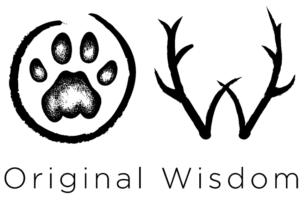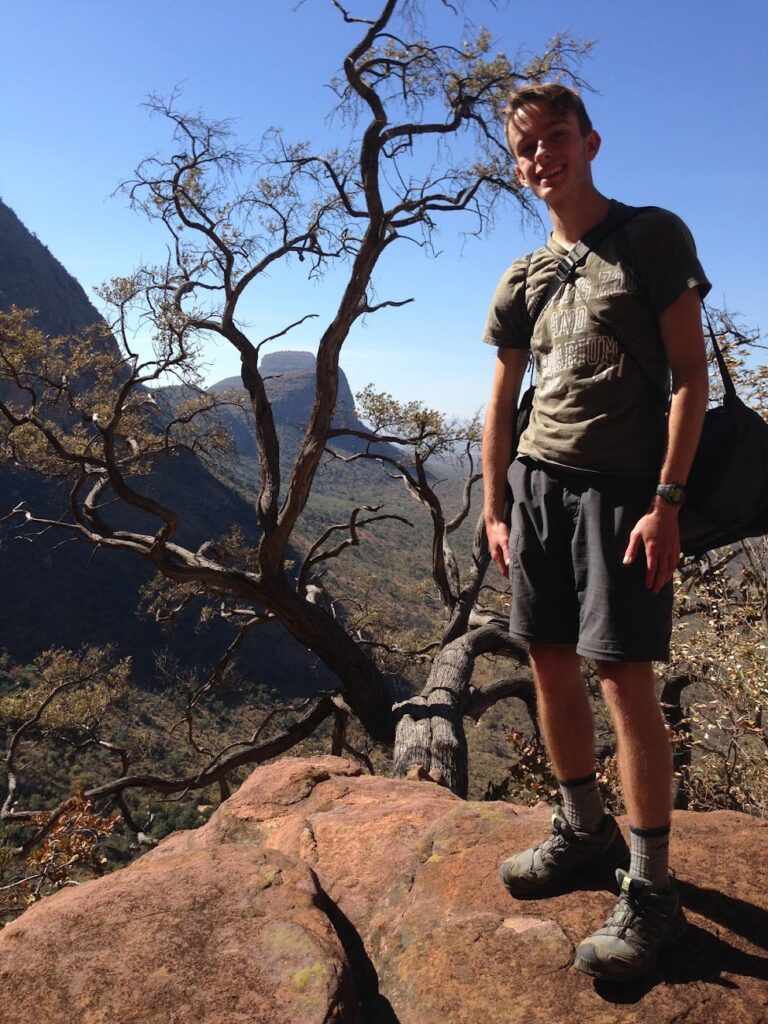October Answers to our #WeeklyTrackingChallenge
Interested in online and correspondence tracking courses? Visit us at TrackerMentoring.com!
Answer list: An African wildcat track from South Africa, Crested francolin feathers from South Africa, and Mud-dauber wasp sign collecting mud in Connecticut in the USA.
(Sorry for the delay on these answers for October while I was defending my doctoral research on trackers in November – but, I passed!)
The art and science of tracking develops creative and critical thinking skills, and curiosity and empathy, which also help us to better understand our place as caretakers of this beautiful world. The full expression of tracking includes more than just identifying tracks and signs. It also includes the interpretation of behaviours from tracks and signs, and the following and finding of animals (or people) using tracks and signs. Following and finding, or trailing, also builds confidence and leadership qualities in individuals, and teamwork among groups. Tracking requires us to really see the environment, and each other, and to reconnect to fundamental systems of living, which include knowledge of self, and connection to community (including non-human communities) and land. Tracking IS original wisdom. It’s both ancient, and new. Our ancestors tracked animals for food, clothing, shelter, and better quality of life. Today, we push the frontiers of tracking forward by including technology and new discoveries. One of the best things about tracking is that the “book of nature” is so vast that we can never know it all. It’s always exciting and always humbling.
#TrackerTuesdays, 13 Oct 2020, Mammal Tracks & Signs
Our #WeeklyTrackingChallenge comes from Ngala Training Camp in the Greater Kruger area of South Africa. Who, and why?
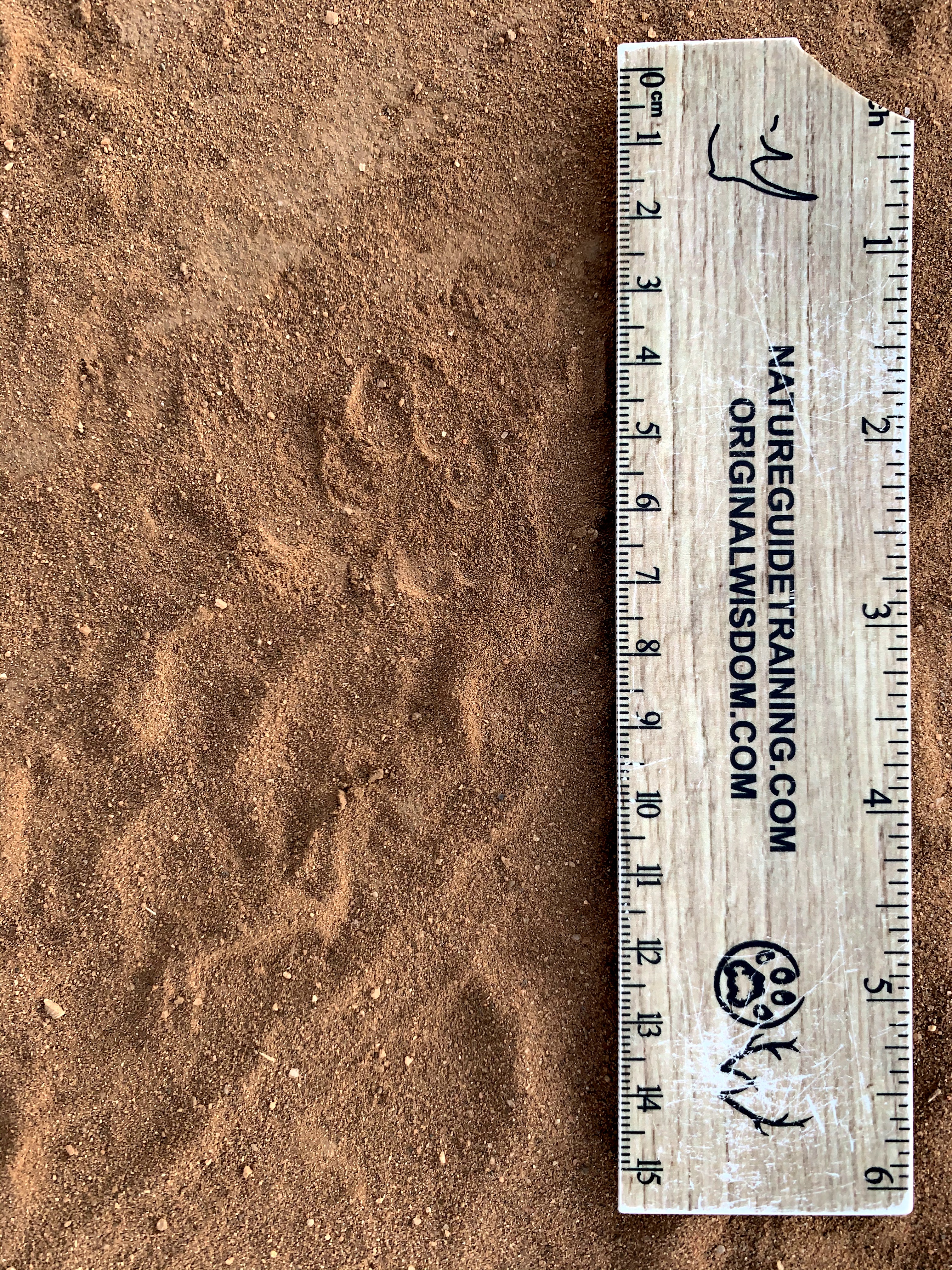
The tracks of an African wild cat in the Balule region of South Africa. Photo by Kersey Lawrence.
These were the tracks of an African wild cat. There is considerable overlap in size between a large African wild cat and a small serval, but these are squarely within the AWC size range, and we don’t get serval in our area of the Balule. That larger central lobe on the back of the metatarsal pad on the hind foot (these tracks are a direct register of a hind foot on top of a front foot) is diagnostic for AWC, too.
Answers given:
Katherine Mathias, from South Africa, said, “African Wild Cat – 3 distinct lobes in the back plantar pad – 3.5cm size. Thank you, Lee Gutteridge’s Bushveld book. Let’s see how we go today.”
Chuggy Charles, from the UK and having worked in Southern Africa, said it, “certainly seems to have the pad lobes, though the pad seems wide (can’t make out the left lobe properly) claws showing, perhaps due to soft ground or the animal preoccupied with its purpose in moving … I’d go with AWC (African wild cat).”
worldwidepredators (Frikkie Kotze, South Africa), “African wild cat back paw.”
bearded_trailsranger, “African wild cat, very large middle back pad.”
belgianwildlifetracker (Søren Decraene, of Belgium), said, “Smaller feline species (3 lobes at the bottom of the metacarpal pad). Serval could indeed be the one.”
megsonsafari (Megan Smith, South Africa) said, “hmmm. I want to say front left foot of a Serval. The size seems about right and is quite narrow. Think the hind foot is a bit more rounded.”
trackingisoriginalwisdom “Megan, you have it reversed. Front feet are rounder in most digitigrade species, because they are broader to carry the extra weight of the head and neck. Hind feet are longer, narrower. It is indeed a small(er) feline, but not a serval.”
#TrackerTuesdays, 20 Oct 2020, Bird Tracks & Signs
Our Weekly Tracking Challenge comes from Ngala Training Camp, home of Nature Guide Training, in the Greater Kruger area of South Africa. Who’s feathers, and why?
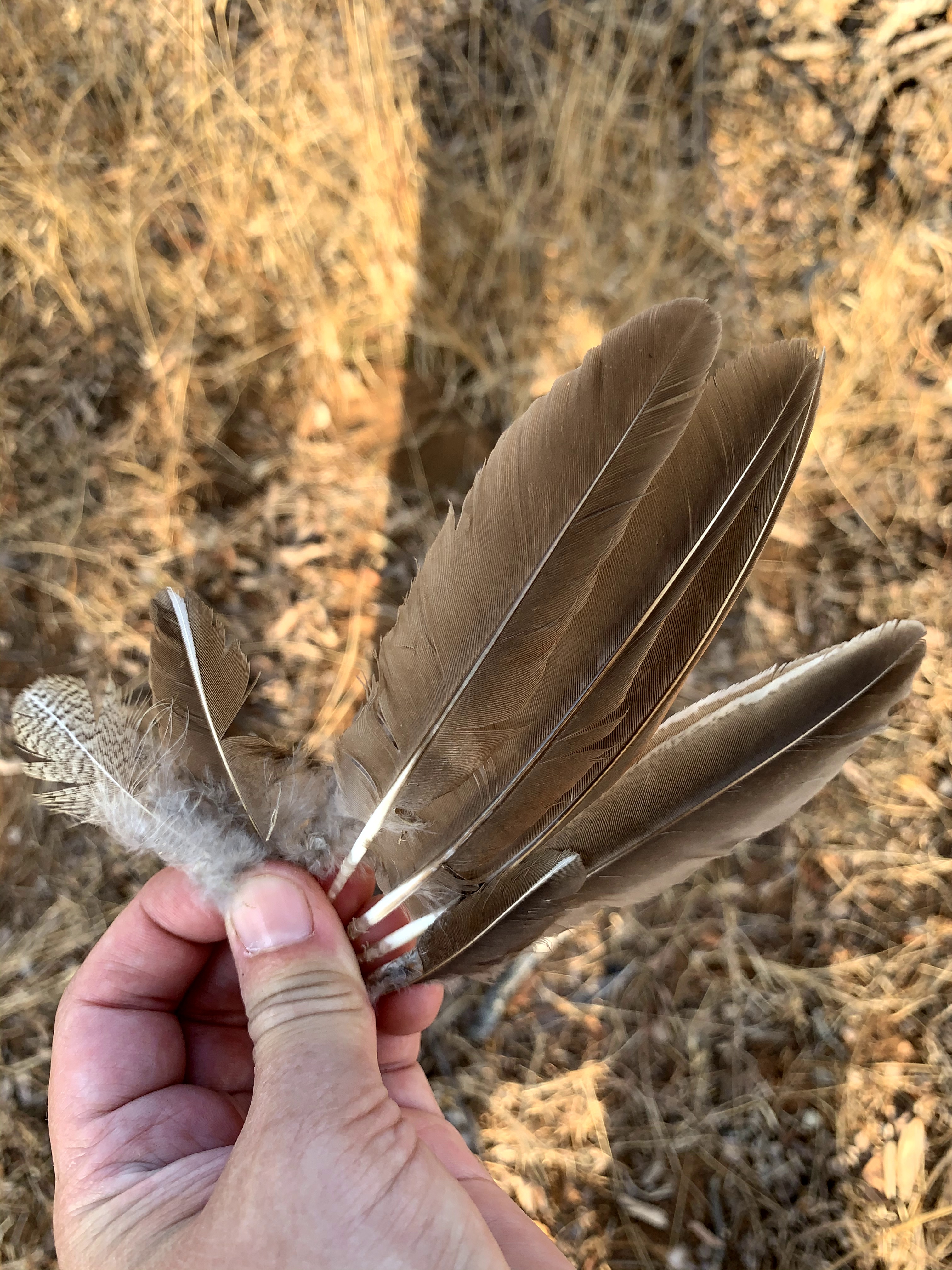
The feathers of a crested francolin, found while on trail in the Timbavati region of South Africa. Photo by Kersey Lawrence.
#BirdFeathers are a new sport here in Southern Africa, and we are currently documenting them for a book. It’s not surprising that no one took a guess on these, because there just isn’t a resource on them yet. We hope to change that but documenting is slow, because we are committed to NOT killing any birds for this project. We are collecting road killed specimens, window-strikes, and power-line fatalities, and need the whole bird to tell which feather is which!
#TrackerTuesdays, 27 Oct 2020, Invertebrate Tracks & Signs
Our Weekly Tracking Challenge comes from Connecticut, in the USA, beside a muddy puddle, but this sign is widespread from across the world. The sign is very small, and individual marks barely exceed a centimeter. Who’s sign, and why?
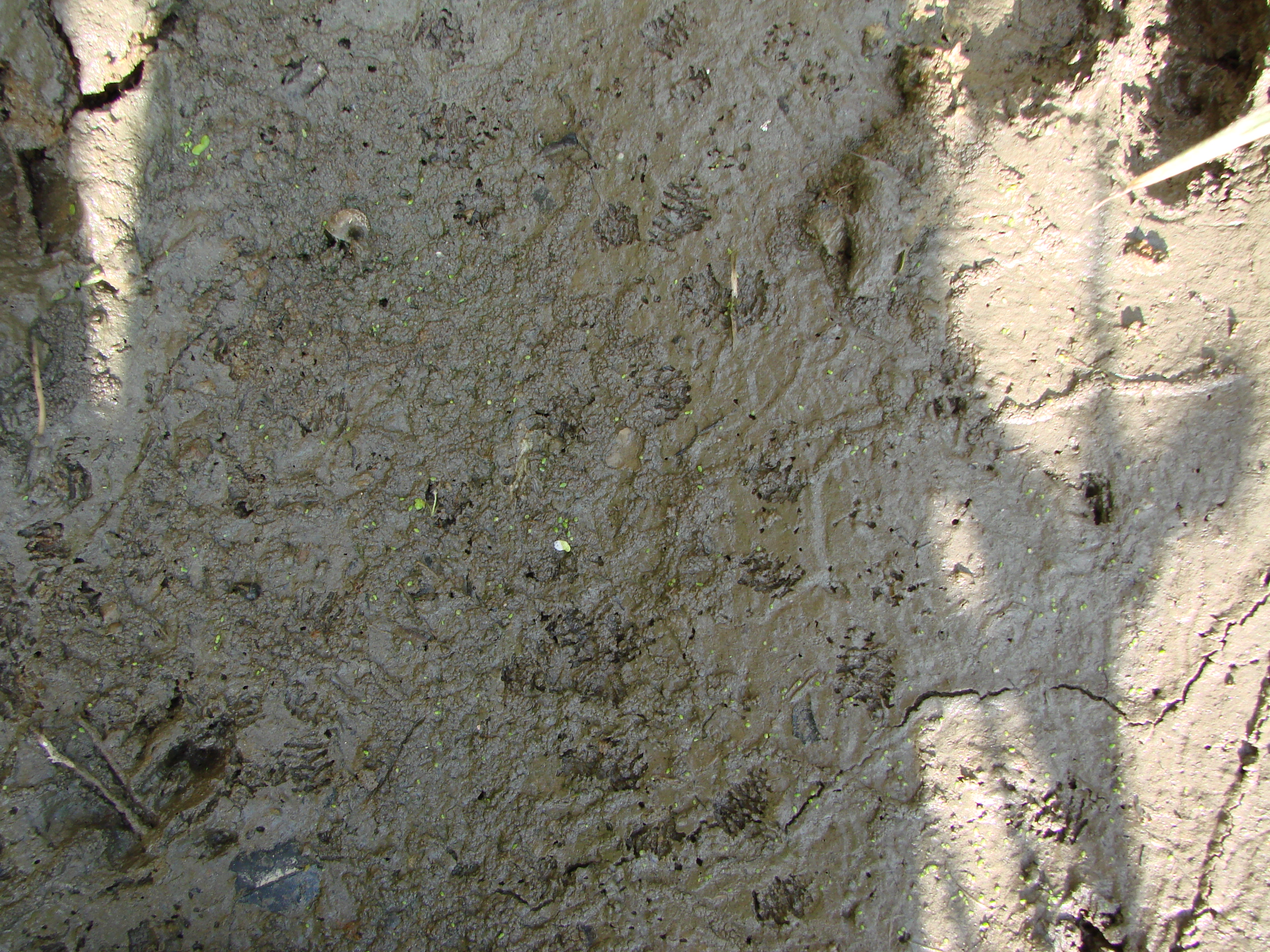
Mud-dauber wasp sign of mud collecting for nest construction. Photo by Kersey Lawrence.
Phil and Søren, from vastly different parts of the world, answered this on for us:
Phil Bennett (California, formerly South Africa) said, “I would go with possibly a mud dauber wasp collecting mud for its nest. I have seen it in Southern and Eastern Africa often. But then looked up in Tracks and Sign of North American invertebrates to confirm that it could occur here. Similar marks to this are shown on pg 444 of that book. So that’s how I come to my attempt.
belgianwildlifetracker (Søren Decraene, of Belgium), said, “Mud collecting insect? 🙂 I know wasps do it (also on wood) to collect nesting materials.”
Thanks to everyone who participated. Let’s keep learning together! If you have photos (with an explanation that you’d like to contribute), please contact me at kersey@originalwisdom.com – your contributions will be credited to you.
Interested in online and correspondence tracking courses? Visit us at TrackerMentoring.com!
Download Original Wisdom’s recommended reading list for trackers by signing up for our “News for Trackers” newsletter!
Our goal is NOT to be spammy with our newsletter. We’d just like to send occasional updates on upcoming programs and maybe some cool info on wildlife, people, and tracking!
Once the sign-up form has been submitted, you will be re-directed to the download page.
Download our recommended tracking book list (and some other resources). It’s specific to Southern Africa and North America, but, a good tracking book is helpful in any region as a starting point to learn how to look at track morphology and animal behavior.
[contact-form-7 id=”2892″ title=”Subscribe to the newsletter”]
